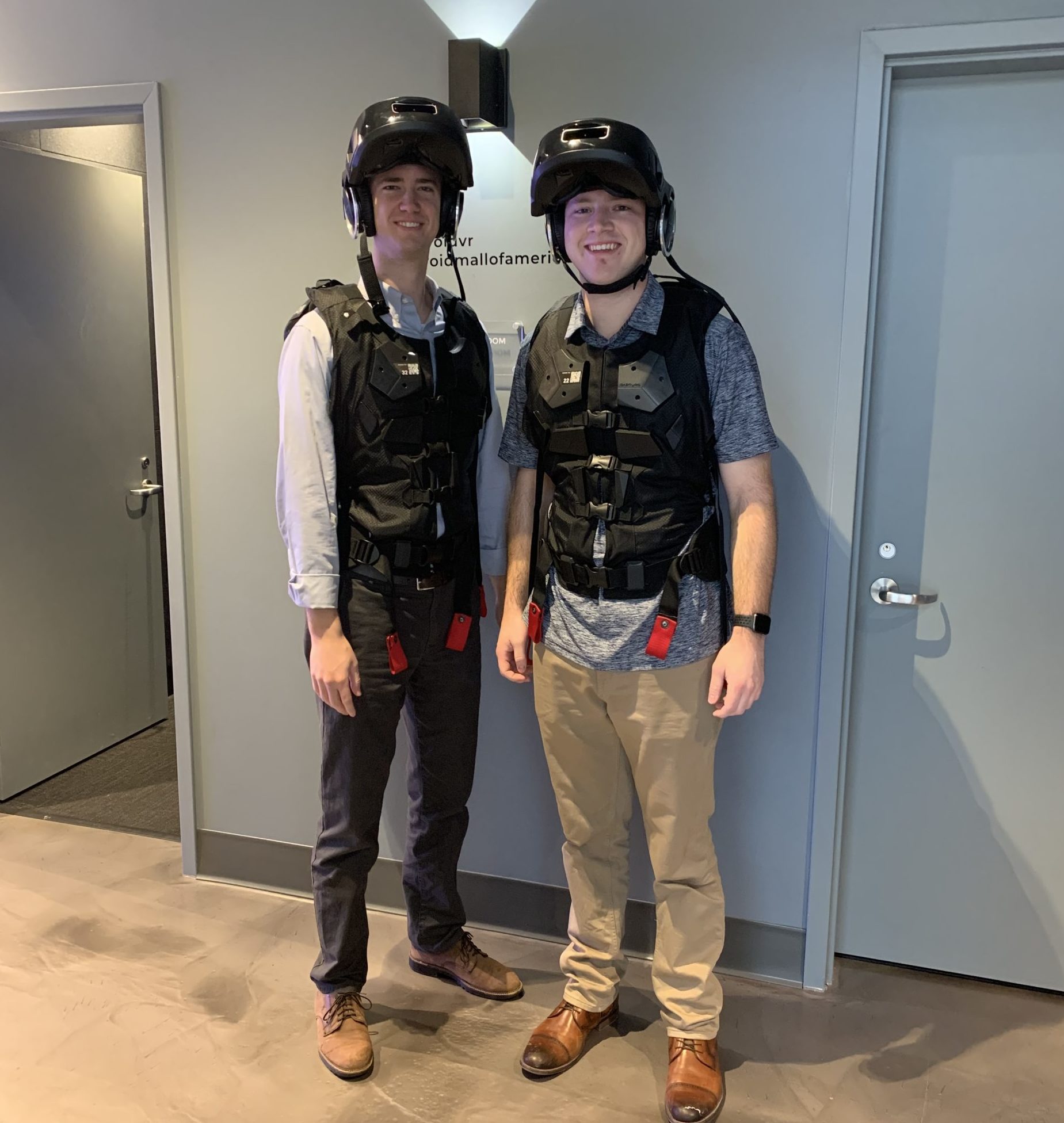We recently had the chance to experience “Star Wars: Secrets of the Empire” at The VOID, a location-based virtual reality destination. While we entered the VOID with some preconceived notions based on our relatively robust experience with virtual reality, we left feeling slightly more optimistic about the opportunity in location-based VR.
The VOID describes the mission:
Under the orders of the budding rebellion, your team will travel to the molten planet of Mustafar. Your mission is to recover Imperial intelligence vital to the rebellion’s survival. Alongside the pragmatic droid K-2S0, your team must navigate through an enemy facility walking into danger at every turn. Disguised as stormtroopers, grab your blaster, solve puzzles, and fight giant lava monsters in an effort to fulfill your team’s orders.
After checking in at The VOID, we were directed to a room and watched a video that described the situation above. The video featured Captain Cassian Andor, portrayed by Diego Luna in Rogue One. After the video, we were helped into our gear which included a PC backpack and tethered headset (that were surprisingly ergonomic and comfortable). We were then directed to the starting area, flipped down our headsets, and played through the experience.

We’ll leave the exact details of the experience out as to not spoil it for others. But, as expected, we spent most of our time fighting stormtroopers and trying to defend the rebel cause. It did not disappoint. While it took some time to feel fully immersed in the story, we left feeling excited about the experience. There are some things particularly exciting about location-based VR, but notable challenges as well.
What Does Location-Based VR Do Well?
Location-based VR allows for a more immersive experience by relying on high-quality content, minimizing locomotion problems, and adding additional sensory inputs to an environment. It also serves as an effective entry point for many users by bringing VR to them.
- High-quality content. “Star Wars: Secrets of the Empire” was one of the best pieces of VR content that we’ve seen. While this is partially due to the strong IP it was built on top of, the production quality was still high. We’ve been pleased with our Oculus Quest and HTC Vive so far, but the VOID offers another level of immersion and quality that adds to the believability of the virtual environment.
- Minimal locomotion problems. During the experience, you are physically moving through space rather than standing still and using a joystick or controller to move. The match of physical and virtual movement helps reduce the likelihood of a user experiencing VR sickness. Traditional VR experiences keep you in a fixed place or force you to use controllers to move around. Being able to actually move through a virtual world without concern for objects near you in the real-world helps make the experience truly immersive.
- Additional sensory inputs. During our experience, we were able to feel wind and smell the environment around us. While we’ve seen startups trying to bring these features to consumer VR platforms, it’s very difficult today. Increasing the number of sensory inputs helps users feel that they are in a new, distinct place, and not just their bedroom or office.
- Bringing VR to consumers. One of the biggest challenges in front of broader VR adoption is the high cost and friction associated with even a basic VR setup. Location-based experiences offer a one-time payment for a high-quality intro to VR that will leave the user wanting more.
Where Does Location-Based VR Struggle?
In our view, the biggest challenge that location-based VR faces is the hurdle of getting users to keep coming back for more.
- Limited content slate. Not only is it challenging to bring people to the same place regularly (as movie theater attendance will point out), location-based VR facilities have a limited catalog of content, which is restricted in part due to their physical footprint. Most facilities have between 3-5 experiences and refresh them every few months. The experiences are fairly expensive, and with a limited slate of content, the incentive to continually return to a facility isn’t there.
- Limited repeat playability. In addition to the limited content catalog, most of the experiences aren’t materially different if they are played multiple times. So even if users have the appetite for more VR content, they likely won’t return again and again. For long-term success in any gaming business, it’s imperative to monetize your heaviest users.
- Pricing. The VOID costs about $1 per minute with most experiences in the 30-minute range. For reference, the average movie costs about $0.08 per minute. Location-based VR outfits need to recoup substantial costs related to building out complex stages, expensive tech equipment, and trained staff. The locations also tend to be in high-traffic and, therefore, expensive areas. Nonetheless, for these businesses to keep people coming back for more, the cost needs to decrease materially over time.
While we ultimately left feeling more positive about location-based VR, there are some important hurdles that these facilities need to overcome in order to achieve long-term success. We remain excited about the possibilities that VR and plan to continue closely tracking the space.
